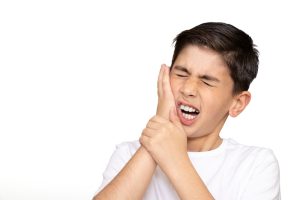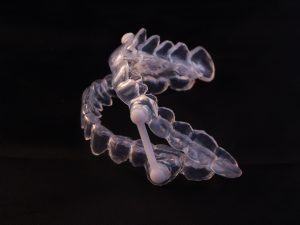Effective TMJ Relief From Polasek Digital Dentistry & Schaefer Dental Group
Are you struggling with jaw pain, facial discomfort, or difficulty opening and closing your mouth? You may be suffering from temporomandibular joint (TMJ) dysfunction, a common yet often overlooked condition. Thankfully, at Polasek Digital Dentistry & Schaefer Dental Group our Howell, MI TMJ dentist, Dr. S. Kyle Polasek, offers a comprehensive TMJ treatment plan for patients dealing with this issue.
Contact our Howell dental office at 517-546-8983 to better understand TMJ dysfunction. You can also keep reading to learn more about its symptoms, causes, and the various treatment options we offer to help you overcome this painful condition.
What Is TMJ Dysfunction?
Temporomandibular joint dysfunction, also known as TMJ dysfunction or TMD, refers to an issue with the temporomandibular joint and the muscles that control its movement. Complications and discomfort associated with the jaw joint and its associated muscles impact normal jaw functions and cause a range of painful symptoms.
It’s estimated that between five percent and 12 percent of the general adult population have some form of temporomandibular joint (TMJ) disorder. These disorders are twice as prevalent in women than in men, particularly in the age group of 35 to 44 years.
Identifying TMJ Symptoms
Recognizing the symptoms associated with TMJ dysfunction is crucial for timely intervention and treatment. Common indications that may suggest TMJ dysfunction include:
- Jaw pain
- Facial pain
- Headaches
- Difficulty chewing
- Clicking or popping sounds when opening or closing the mouth
You should seek medical help if you experience regular jaw pain, chronic facial pain, headaches, or other TMJ symptoms by calling 517-546-8983.
Causes and Risk Factors for TMJ Dysfunction
Genetic and Lifestyle Factors
Research has suggested a genetic association with TMJ dysfunction. Additionally, individuals with close relatives who have TMJ disorders are thought to be more likely to develop TMD symptoms. Nonetheless, it’s critical to note that TMJ Dysfunction is not exclusively a hereditary disorder.
Lifestyle factors can also contribute to TMJ dysfunction. Some factors include:
- Stress: Stress can induce tension in the jaw muscles, resulting in pain and discomfort.
- Poor Posture: Poor posture can lead to tension in the jaw muscles.
- Teeth Grinding: Teeth grinding can also cause tension in the jaw muscles.
Stress and Emotional Factors
Stress is a significant factor that can contribute to TMJ dysfunction. Anxiety and psychological distress caused by stress can affect the temporomandibular joint, leading to temporomandibular disorder.
Additionally, it has been noted that students in stressful environments are more likely to develop TMJ dysfunction. The effects of stress can have a physical impact on the body, including the jaw.
Diagnosing TMJ Disorders
Healthcare providers like dentists and maxillofacial surgeons can diagnose TMJ disorder through:
- Observation of symptoms and jaw movements during a dental checkup or physical examination
- Imaging tests, such as X-rays or MRI, for a closer look at the jaw joints and the structures surrounding them
- TMJ arthroscopy to view the joint space and produce a diagnosis
Should you be experiencing persistent TMJ pain, popping jaws, or other associated symptoms, consulting Dr. Polasek for an accurate diagnosis and appropriate treatment plan can help. Early detection and intervention help patients manage the condition and prevent complications.
Non-Surgical Treatment Options
Home Remedies and Self-Care
Simple home remedies and self-care practices can help alleviate TMJ symptoms. Here are some suggestions:
- Cold Compresses: Applying a hot or cold compress to the affected area can provide temporary pain relief.
- Soft Diet: Consuming soft foods and avoiding hard or chewy items can reduce discomfort and strain on the jaw muscles.
- Jaw Stretches: Practicing gentle jaw stretches can help alleviate TMJ symptoms.
- Maintain Good Posture: Pay attention to your posture, as poor posture can contribute to TMJ discomfort. Ensure that your head and neck are properly aligned.
- Oral Hygiene: Be mindful of oral hygiene practices. Avoid excessive gum chewing or biting your nails, as these habits can strain the jaw.
- Avoid Caffeine and Alcohol: These substances can contribute to teeth clenching and grinding, which exacerbate TMJ symptoms. Reducing their intake may help.
- Jaw Massage: Gently massaging the jaw joint and surrounding muscles can provide relief. Use your fingers to apply light pressure to the affected area.
- Hydration: Staying well-hydrated is essential for overall health, including the health of your jaw muscles. Dehydration can increase muscle tension.
Stress Management Techniques
Stress management techniques are a valuable component of TMJ (temporomandibular Joint) treatment. These methods include activities like deep breathing exercises, yoga, and meditation. They’re designed to reduce muscle tension and alleviate the effects of stress on the jaw muscles.
Deep breathing exercises promote relaxation and can help minimize muscle tension, while yoga and meditation provide holistic approaches to managing stress. These techniques can be particularly effective in easing the discomfort associated with TMJ dysfunction by addressing the root causes of tension and anxiety.
Cognitive Behavioral Therapy (CBT)
Cognitive behavioral therapy is a form of psychotherapy used to address TMJ dysfunction. It focuses on identifying and modifying negative thoughts and thought patterns that may contribute to stress and anxiety, leading to jaw muscle tension and pain. CBT helps individuals gain insight into their emotional responses and develop strategies for coping with stressors.
Targeting the psychological aspects of TMJ can be beneficial in managing the condition and reducing its impact on daily life, ultimately promoting better jaw health.
Professional Therapies for TMJ
Medications for TMJ Treatment
When treating TMJ, medications play a significant role in alleviating symptoms associated with temporomandibular disorders (TMDs). Both over-the-counter and prescription medications tailored to the specific needs of the patient can help.
Over-the-counter options can include pain relievers to manage discomfort, while prescription medications may encompass muscle relaxants or anti-inflammatory drugs. These pharmaceutical approaches aim to reduce pain and inflammation, providing much-needed relief to individuals suffering from TMJ-related symptoms.
Complementary Treatments for TMJ
Complementary treatments for TMJ, such as acupuncture and transcutaneous electrical nerve stimulation (TENS), offer non-pharmaceutical avenues for symptom management.
Acupuncture involves using fine needles at specific points on the body to stimulate natural healing processes and potentially alleviate TMJ-related discomfort. TENS employs low-level electrical currents to target the affected jaw area, relaxing the muscles and reducing pain.
Intraoral Appliances for TMJ Treatment
Intraoral appliances, including dental splints and mouthguards, are custom-made devices designed to aid in TMJ treatment. They play a crucial role in reducing strain on the jaw joint, preventing teeth grinding (bruxism) and clenching. These appliances are fabricated to fit a patient’s unique dental structure, ensuring optimal comfort and effectiveness.
By providing a physical barrier that separates the upper and lower teeth, intraoral appliances help mitigate the negative impacts of TMJ disorders. They’re particularly beneficial for patients seeking relief from jaw pain, headaches, and other TMJ-related symptoms, offering a non-invasive and highly personalized approach to treatment.
Surgical and Advanced Treatment Options
Surgical and advanced treatment options for TMJ dysfunction might be considered when non-surgical treatments fail to provide relief or if the condition is severe.
- Arthrocentesis involves the injection of liquid into the temporomandibular joint to remove scar-like tissue and substances that cause inflammation.
- Arthroscopy involves the insertion of a tiny video camera into the jaw joint to facilitate the diagnosis and treatment of TMJ dysfunction.
- Open surgery provides access to the temporomandibular joint by making an incision near the ear.
- TMJ implants are artificial devices employed to substitute part or the entirety of the jaw joint.
Preventing TMJ Disorders
Preventing TMJ disorders and reducing risk factors can help in maintaining good oral health and avoiding complications. Some strategies to minimize the risk of TMJ dysfunction include:
- Keeping the face and jaw relaxed
- Abstaining from overusing the jaw muscles
- Lessening stress levels
- Refraining from grinding the teeth or clenching the jaw
- Consuming soft foods
- Applying hot or cold compresses
- Performing gentle jaw stretches
- Discontinuing the habit of chewing gum
By adopting these preventive measures and staying vigilant about the early signs and symptoms of TMJ dysfunction, you can protect your oral health and ensure a pain-free, functional jaw.
Frequently Asked Questions
The most effective treatment for TMJ disorder is the use of bite guards, which can reduce pain and minimize long-term side effects. Other treatments may include over-the-counter or prescription medications, such as pain relievers, anti-inflammatories, muscle relaxants, and tricyclic antidepressants.
Yes, you can treat TMJ disorder yourself through jaw exercises, at-home remedies, and pain relievers. However, it’s important to seek professional advice before doing so, as further pain or discomfort could occur.
Stress and eating hard and crunchy or chewy foods are the main triggers of TMJ flare-ups. Teeth grinding and clenching caused by stress can further exacerbate TMJ symptoms.
TMJ disorder can affect sleep quality due to jaw and muscle discomfort, making it challenging to find a comfortable sleep position. Additionally, TMJ disorder may lead to teeth clenching or grinding during sleep, potentially disrupting sleep patterns.
When TMJ disorder and sleep apnea coexist, their combined impact on sleep quality and well-being highlights the importance of addressing both conditions through comprehensive treatment.





